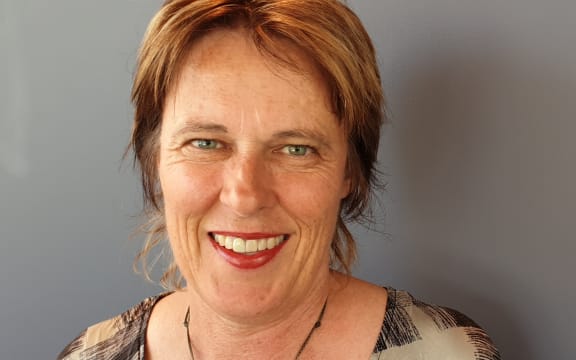
Many midwifery students are dropping out before graduation. Photo: Getty Images
Midwifery students say they are being used to plug roster gaps in the health system, which is grappling with a 40 percent shortage of this critical health workforce.
With more than four out of ten students currently dropping out due to financial pressure and burnout, the College of Midwives warns the government's plan to boost trainee numbers will fail if it is not adequately funded and supported.
According to the much-anticipated health workforce taskforce report, New Zealand needs to triple the number of midwives it trains for four years to address the current workforce deficit - and even then it will not close the gap until 2031, when they all graduate.
Some midwifery students have told RNZ the workload and conditions have caused them to rethink their career choice.
One second-year student - who wishes to remain anonymous - said she was horrified by how much responsibility she was given in her first year.
"I couldn't believe how much they relied on students to fill gaps, the fact the workforce shortage was so awful we were having to act as other staff members so early in our degrees.
"It's got a bit better this year, I think they had too many complaints to ignore, but it's still not great.
"In some ways it's great for giving you experience, but you're not getting the supervision you need sometimes and everyone is so stressed and burned out, you don't feel you can ask that much of them."

Alison Eddy. Photo: supplied
College of Midwives chief executive Alison Eddy said the 40 percent shortfall was "shocking, but not a surprise".
"That really reflects what we've been hearing from midwives for some time.
"It's good to have it documented but we really need to make sure we have an absolute focus and priority on the profession of midwifery if we're going to turn this around.
"It has to be the priority and I don't see that necessarily coming through from the rest of the plan."
Te Whatu Ora's plan included a temporary boost to student numbers, better financial support for them and encouraging others to return to practice.
Eddy said the college had long advocated for an "earn as you learn" model.
Simply ramping up trainee numbers would not be "not a quick fix or easy to do", she cautioned.
"They need to be set up to succeed.
"There are issues around having enough applicants with the right qualifications to get into the programmes, they need to be supported and have access to good quality clinical placements through the programmes, and they are all challenging at the moment because of our workforce environment.
"So nothing is as simple as it sounds."
Furthermore, she was skeptical of the report's claim that the ageing population would mean "demand for midwifery services will decline over time".
"That doesn't take into account immigration or the fact some demographics are having more babies. We certainly can't count on that to fix our long-term workforce shortage."
Attrition among midwifery students is 42 percent on average.
To get 100 graduate midwives, 174 people must start the degree.
It is a hugely demanding course - a four-year programme that has been shoehorned into three years at some institutions in order to produce graduates more quickly.
Students said that made it impossible to take on part-time work to subsidise their studies, and getting paid for some of the shifts they do would make a big difference.
"All my breaks I'm having to do hospital shifts to build up my hours and then we only have six weeks off at the end of the year, which is not really enough time to get a job and save for the year," one said.
Most midwives have racked up at least $40,000 in student loans by the time they graduate, more if they have done other study first.
Another said nearly all her classmates were planning to go to Australia for higher pay after graduation.
"We fall so financially behind during the course that people are pushed overseas to pay back the money they didn't get while they were studying."
Clinical placements include months of unpaid on-call work, requiring travel and accommodation in different regions and sometimes last minute changes.
"They do rely heavily on the idea we can stay with friends or family, which is unrealistic for some people."
Midwifery students must have their own car and pay for petrol, parking and all other costs.
"The number of parking tickets we've got this year are keeping the council going, because when you're at a birth at the hospital, you don't have time to go and feed the meter, there's not enough parking around the hospital.
"And if you park where it's free, you're having to walk for miles in the dark."
Midwifery advisor Claire MacDonald said the lack of support for students on placement was symptomatic of the pressure on the whole profession.
"If you don't invest in midwifery as a profession, then you're going to have issues with lack of progress through the degree, attrition through the degree and midwives leaving the profession because they don't feel valued for the work that they've done."
Meanwhile, it is whānau who are paying the price for the chronic shortages.
First-time mother Casey has called more than 30 midwives since she found out she was pregnant, at around five or six weeks, and no one is available.
She estimates she is now between 15 and 18 weeks' pregnant.
"I have no idea what I'm doing. I went to the doctor's and obviously I've missed a bunch of tests and scans that I was supposed to have.
"Now I'm going to the community midwives [the hospital-based team], but the first time I got referred to them, they told me I had to keep looking and come back again."
She is finally booked to meet a hospital midwife on Friday.
The College of Midwives said if the government wanted to stop attrition, it needs to commit to fair and equitable pay for all midwives.
Eddy said Te Whatu Ora's plan had not identified all the reasons behind the current shortfall and so had missed "some key solutions".
"We are hopeful that the reference to 'ensuring financial pressures aren't a source of attrition in our midwifery workforce' signals the government's commitment to
implementing fair and reasonable pay for all midwives," she said.
No one from Te Whatu Ora was available for interview.
In a written response to RNZ's questions, it said it shared "the aspirations of our workforce and union partners for a health system that is equitable, sustainably staffed, and where New Zealanders can access excellent planned and urgent care when they need it".





